Bonsai stands are small tables used to display bonsai. They’re commonly found in exhibits or in formal indoor displays. We rarely see them in the garden as few stands are built to last outdoors.
Why use stands at all? More than anything else, we use stands to raise bonsai above standard table height so they’re closer to eye level. Elevating bonsai makes it easier for visitors to appreciate the trees without having to bend over to get a better look.
It’s easy to get started with bonsai stands when you know some of the basics. Today we’ll look at how to select a stand based on its shape, size, and style.
Getting the shape right
The most common shapes for bonsai stands are square, round, and rectangular. Here are some of the most common conventions for how to use them.
- Bonsai planted in round pots are typically placed on round or square stands. Alternatives include hexagonal stands, octagonal stands, and flat slabs with natural edges.
- Bonsai planted in rectangular or oval-shaped pots are typically placed on rectangular stands.
- Bunjin or literati bonsai (trees with long, slender trunks) are commonly placed on low, flat slabs.
- Cascade and semi-cascade bonsai, which are typically planted in square or round pots, are most often displayed on round or square (or hexagonal, or octagonal) stands that are taller than the average stand.
- Shohin bonsai are often displayed in box stands (see “Anatomy of a shohin display” and “Alternatives to box displays” for details).
Getting the size right
After selecting a basic shape for your stand, the next step is to focus on the size. Using a stand that’s too big can make a tree look wimpy. Using tiny stands for massive trees can look precarious. In other words, getting the balance right with stands is similar to getting the balance right with containers.
One tip: in general, most stands I see in the U.S. are too small and/or too low. The stands in the photos below aren’t necessarily perfect for the trees they’re paired with, but they’re relatively well-matched in terms of their size.
Get the style right
We’ll keep this simple for now. In general, heavy trees with massive features often look good on stands that appear strong enough to hold them. Likewise, delicate trees often look good on stands with more delicate features.
Is this a hard and fast rule? Definitely not! It is, however, a helpful starting point when selecting a stand. Sometimes a stand with lots of fine detail is too much when paired with a dense deciduous tree. In other cases it might be a great fit. The main thing is to consider which aspects of a tree are highlighted or downplayed when paired with a given stand.
Examples
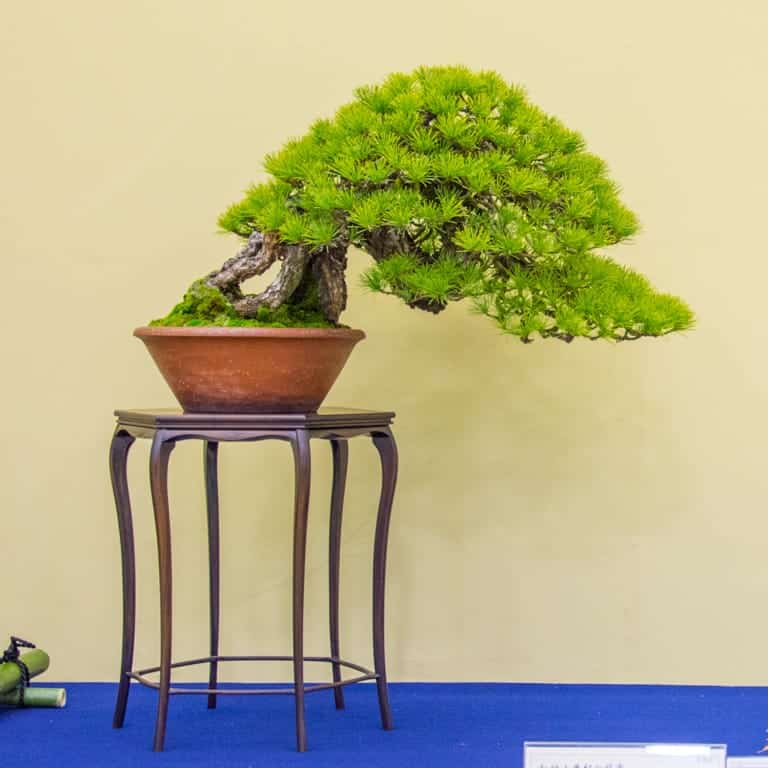
White pine on 6-sided cascade stand
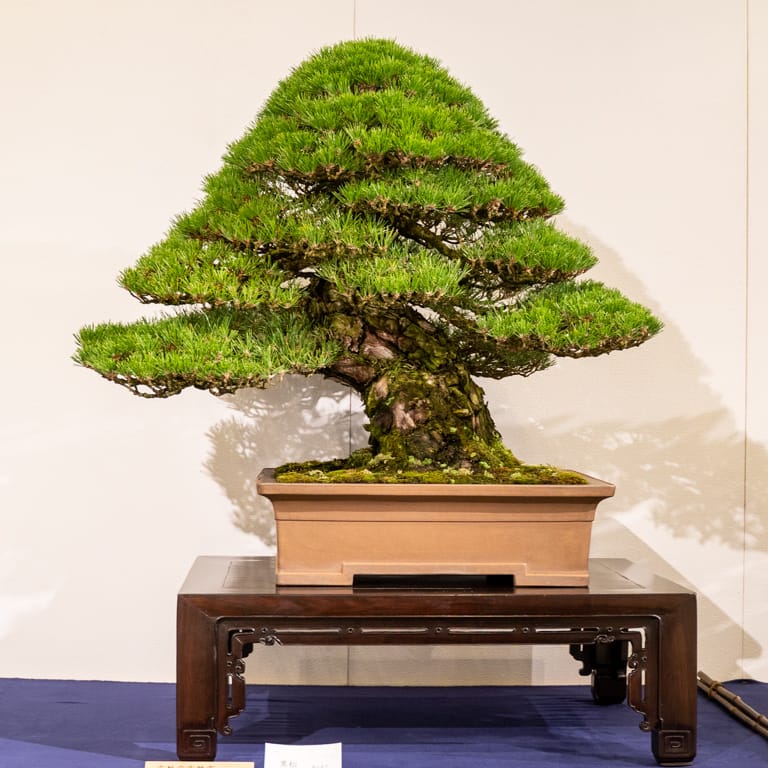
Black pine with a strong trunk on a stand with strong legs and straight lines
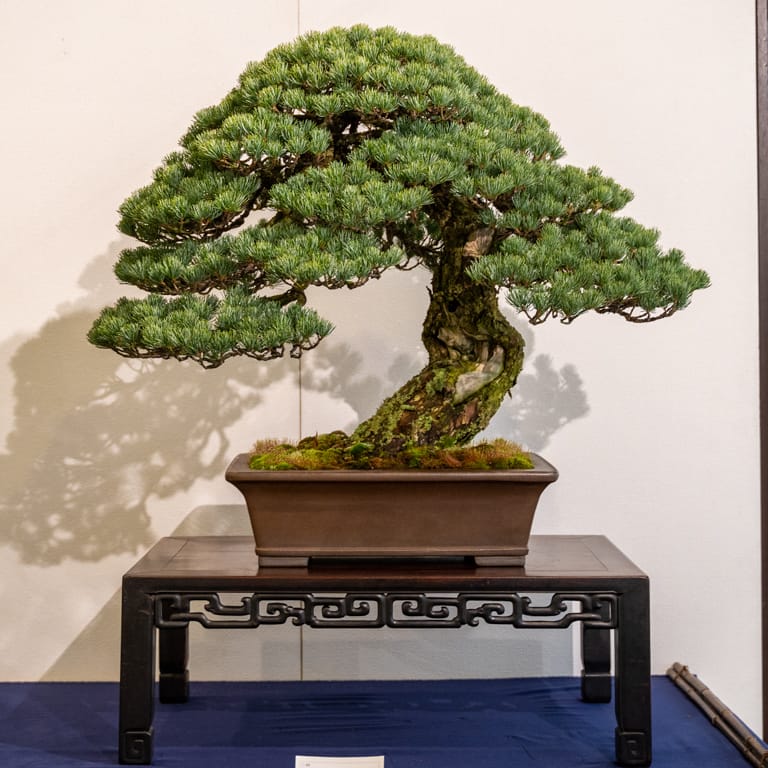
White pine on a straight-legged stand with curved details
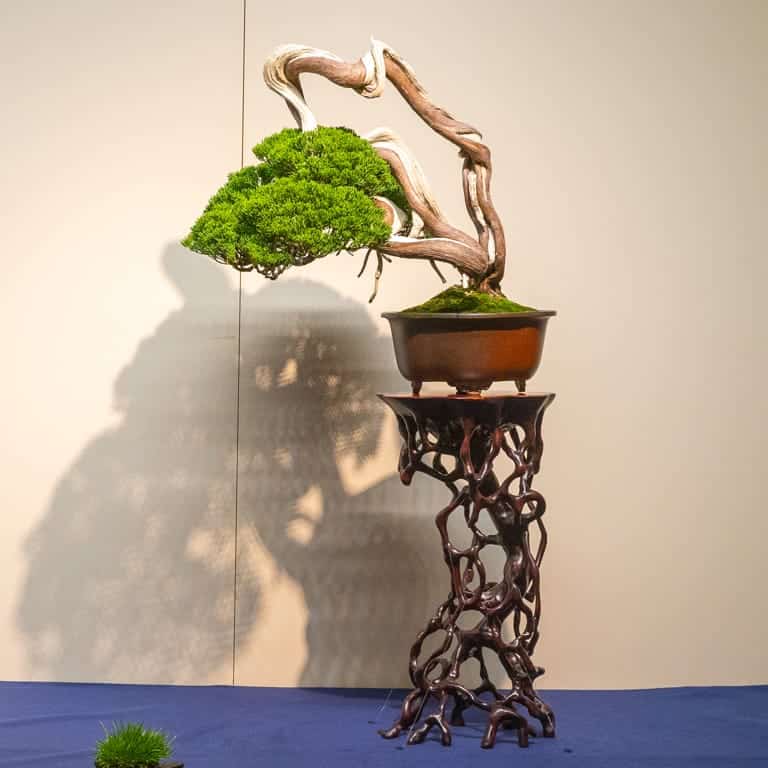
Shimpaku on a root stand – root stands make a nice contrast to square or round stands for cascade and semi-cascade bonsai
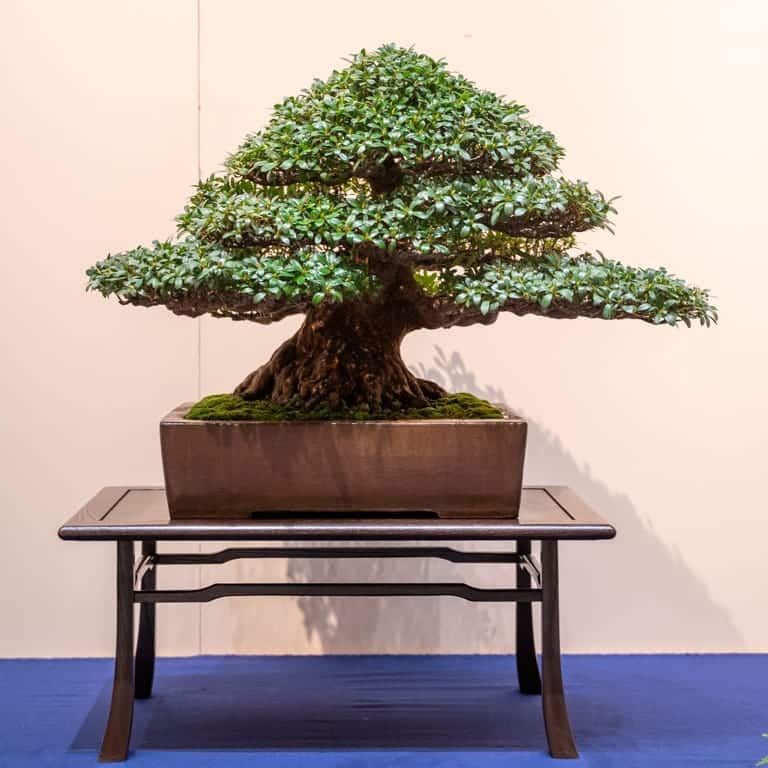
Satsuki azalea on a stand that looks lightweight compared with the size of the trunk
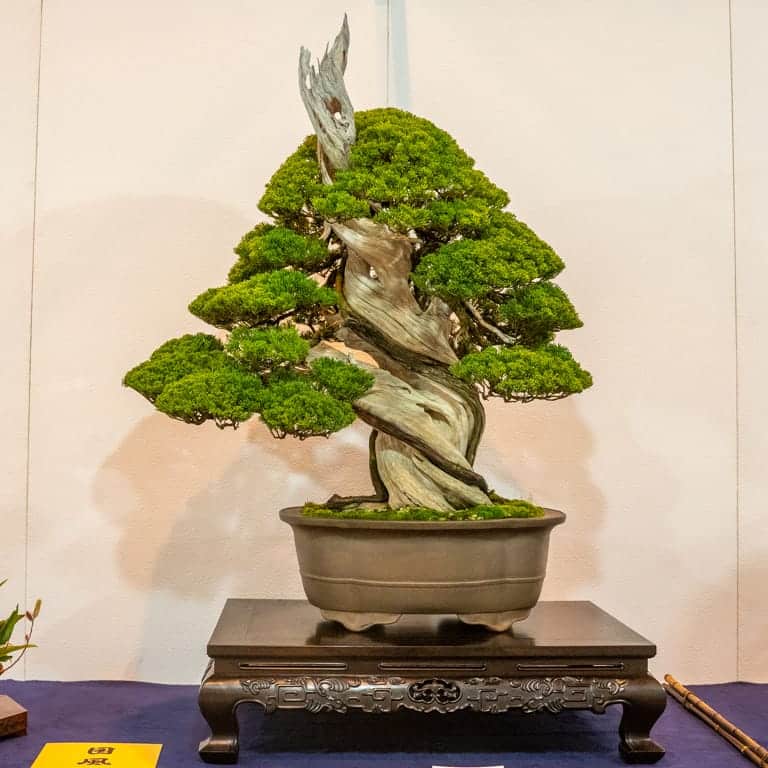
Sturdy shimpaku on a sturdy stand
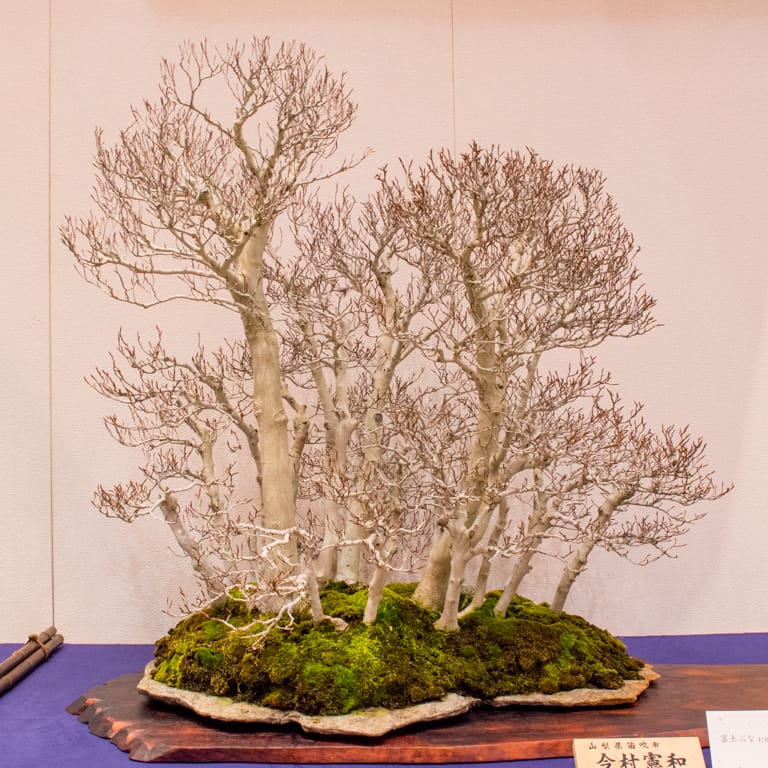
Japanese beech forest planting on a slab stand
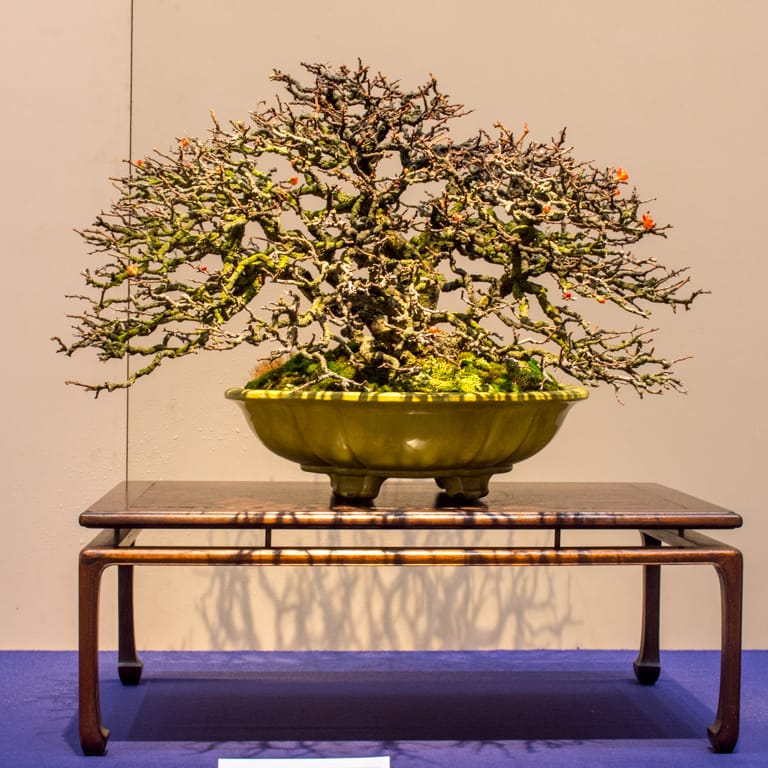
Chojubai on a stand with a floating panel
Where to find stands
Stands are available from a growing number of craftspeople around the world. Some, like Austin Heitzman and David Knittle, are known throughout the U.S. for their extraordinary work.
Imported stands from China and Japan are also widely available. If you need a standard size and shaped stand, imported stands can be a good way to go.
If you’re looking to borrow a stand, check with senior members in your bonsai community for suggestions. Many of us have been collecting stands for years and are happy to see them used in exhibits!
(Related, I recently began putting photos of my stands online to help people find matches for their trees ahead of the Pacific Bonsai Expo. I’ll be adding more stands in the coming weeks – here’s what I have listed so far.)
Have a favorite kind of stand or stand-related tip? Feel free to share it in the comments below!
Subscribe to Bonsai Tonight
New Posts Delivered Every Tuesday and Friday
Bruce Winter says
If I loan out a stand for a show I insist that felt “dots” are on the bottom of the pots feet.
Jonas Dupuich says
Great point! We did the same at Bay Island Bonsai exhibits.